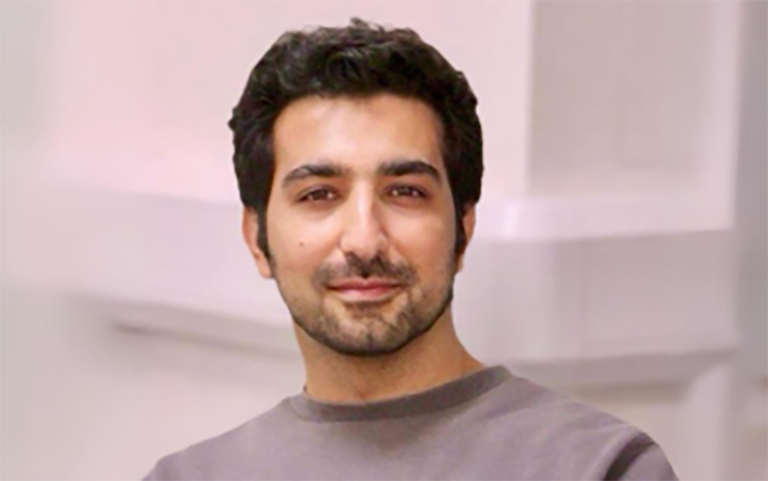Dr Reza Maroofian is a geneticist at the UCL Queen Square Institute of Neurology who researches challenging paediatric neurological disorders.

What attracted you to the area of rare neurodegenerative conditions?
I was drawn to the field of rare neurodegenerative conditions by their unique characteristics, particularly their prevalence in children with a genetic origin.
Unlike more common adulthood-onset disorders like Alzheimer's, Parkinson's and Amyotrophic lateral sclerosis, these conditions are exceptionally rare and often go unnoticed by the public and healthcare professionals, being deemed untreatable.
This lack of attention and the prevailing misconception has designated them as 'Orphan' diseases, resulting in a significant lack of funding and research. This neglect has left a vast and unexplored landscape full of untapped potential, fostering a sense of uniqueness and opportunity for discovery.
The potential impact on patients and the relatively swift translational aspects of rare disorder research further contribute to the allure of this field. Moreover, the inherent puzzle-solving nature involved in unravelling the genetics of rare disorders fuels my curiosity, fascination and dedication to this distinctive and often overlooked realm of medical research.
What are some of the challenges in researching rare neurodegenerative diseases?
As mentioned earlier, given the limited number of individuals affected by each of these conditions, finding these families and gathering their clinical and genetic data, along with biomaterial samples, poses a significant challenge.
It could potentially take years to establish a comprehensive cohort for research studies. Limited funding, over-prioritisation of more common diseases and ethical concerns have hindered data access, and a lack of awareness among healthcare professionals of these diseases also poses additional obstacles.
Another challenge is that many patients with these primarily genetic disorders, especially in less economically developed countries, lack access to genetic testing. There is an inadequacy in effective mechanisms and infrastructure for data sharing among research and diagnostic labs worldwide, despite the existence of substantial datasets and data repositories.
The lack of synergy among many experts has led to a fragmented understanding of the broader context, potentially overlooking opportunities for collaboration and shared insights. Often, the bigger picture is lost as individual groups work in relative isolation on their own projects. Therefore, bridging these gaps requires enhanced communication, emphasising the importance of adopting a cross-disciplinary approach to tackle these challenges effectively.
How does international collaboration in rare disease research take place, what are the scientific challenges and how are they overcome?
International collaboration in rare disease research is fundamental to addressing the complexities of over 10,000 conditions, many of which remain unknown or poorly defined. Understanding the causes, disease mechanism, and treatments of these rare diseases requires extensive collaboration, interdisciplinary approach and data-sharing in order to overcome scientific challenges and also the preparation of the next generation of scientists across the globe as no single centre can tackle all these problems on their own.
Overcoming these challenges requires a multifaceted approach with extensive network collaboration, resource pooling, harmonisation among research groups, and sharing of expertise to accelerate progress. An effective strategy for advancing rare disease research involves collaboration across various ethnicities, raising public awareness, and establishing robust biobanks worldwide.
What are the most recent technological advances being applied and how do they represent an improvement over traditional methods?
Recent technological advances, including high-throughput technologies and advanced data integration algorithms, have significantly impacted the various domains of medical and biomedical science and in particular rare disorders. Multi-omics approaches, coupled with machine learning and AI, enhance our ability to analyse and process data more accurately. These innovations revolutionise our understanding of rare diseases, providing comprehensive insights and paving the way for targeted therapeutic interventions.
What role does public awareness play in driving research funding and support for rare disorder initiatives?
Public awareness is pivotal in steering research funding and support for rare disorder initiatives. With numerous rare conditions and limited government resources, the collective voice of affected families becomes a potent force. History has demonstrated the transformative power of unified efforts, significantly influencing research endeavours. While this impact has been notable in more economically developed countries, the next crucial step is to foster international collaboration, uniting affected families globally to elevate awareness and amplify support for rare disorder initiatives.
How do you envision the future landscape of rare disorder research and treatment in the next decade?
In the next decade, rare disorder research and treatment are set to undergo transformative advancements.
Enhanced technology and increased awareness will provide unprecedented insights. Collaborative efforts, globally and nationally, will expedite discoveries, paving the way for tailored treatments based on a deeper genetic understanding. This holds promise for improved accessibility and hope for affected individuals. Rising advocacy and public engagement will elevate the profile of rare diseases.
The future appears bright, with groundbreaking breakthroughs reshaping the landscape, offering more effective treatments, and ultimately improving lives. Accurate diagnosis, understanding disease causes, and progress in drug discovery/repurposing, gene and stem cell therapies, along with the potential application of CRISPR technology, contribute to this optimistic outlook.
 Close
Close

